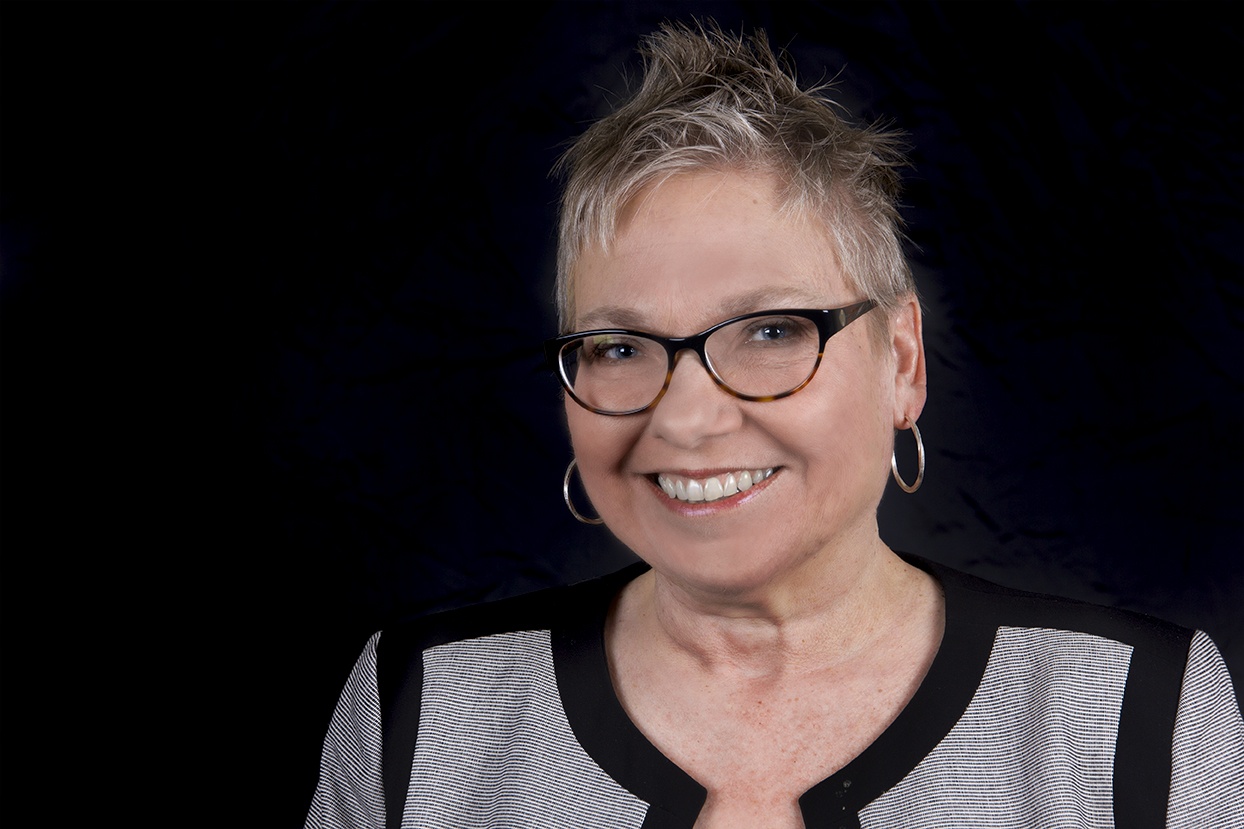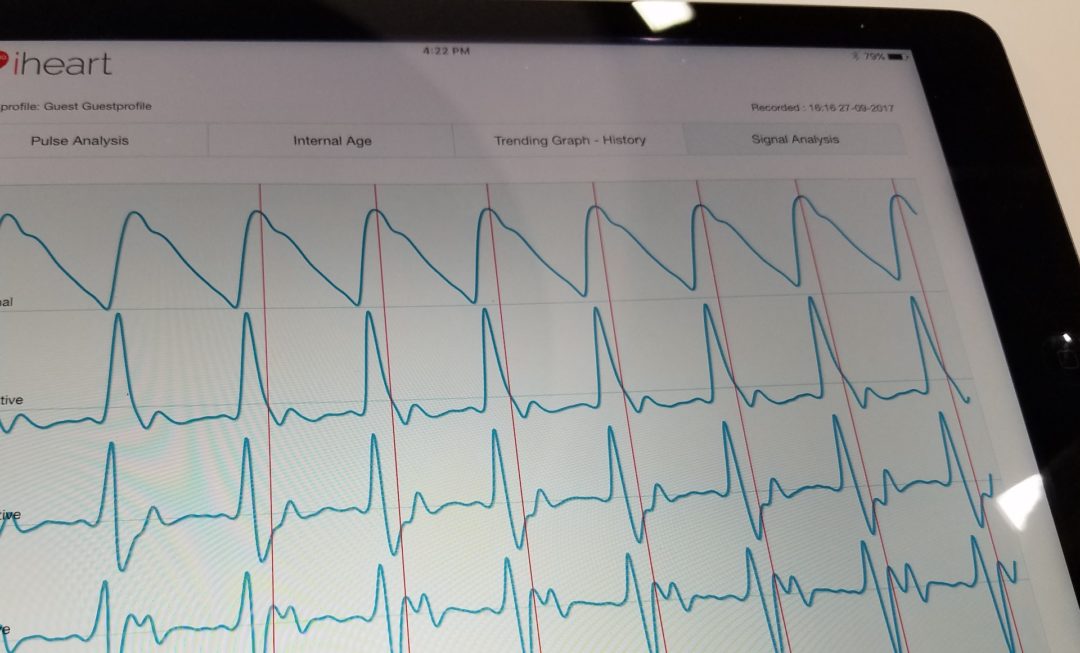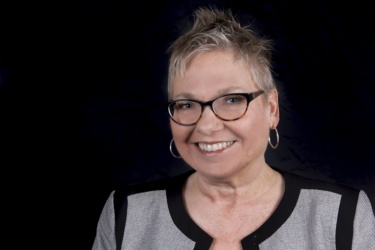About 30 seconds later, Dr. Jess Goodman, founder of iHeart, looked at the iPad displaying my results. His face told me the story. When he flipped it around to show me, I was dejected to see myself registering an internal age 8 years older than I actually am! (Chronologically, that is.)
Dr. Goodman encouraged me to take the test again, but first to relax and start breathing. So I did. I closed my eyes. Took deep breaths in and out. Tried to clear all thoughts from my mind. I did this for two minutes. Then we tried again.
This time, my internal age had dropped by 22 years — making me 14 years younger than my chronological age. My immediate reaction was to ask if the test is rigged. Once a reporter, always a reporter. The good doctor swore it is not.
The experience reminded me to remember to breathe and just how powerful a practice it is to pause.
Next, it was time for my omega-3 testing. The Omega-3 Index Project is an effort to raise awareness of omega-3 deficiencies and give people the chance to do something about it. A recent study of 200 mostly health-conscious people in Germany and the U.S. found a whopping 98% were in the high-to-medium risk category once they got their levels tested.
In a fascinating SSW panel on personalized nutrition, the convergence of two megatrends — health and wellness with digital and medtech — Karen Howard, CEO of the Organic and Natural Health Association (ONHA), confided she has a “horrible” omega-3 level and a “crappy D-level too.” She’s a supplement taker, with bad compliance (meaning she doesn’t take them consistently). She said omega-3 insufficiency is a global health concern and showcasedNutrientPower.org, the ONHA education website aiming to help people help themselves.
Rony Sellam, CEO of Segterra’s InsideTracker, described how the goal of its program (with plans ranging from $299 to $589) is to give people the motivation and a roadmap to change their behavior based on real knowledge. Segterra just partnered with BASF to create data-driven recommendations under its Newtrition brand. BASF will also get real-time insights into market needs to develop solutions.
It’s all about empowering the consumer, not someone telling you what to do.
“I don’t think there will ever be a viable business model where the person being told what to do will pay for it,” remarked Nard Clabbers, senior business developer of personalized nutrition and health for TNO Healthy Living.
Jeff Hilton, co-founder and CMO, BrandHive, called it a “perfect storm marketplace opportunity” as product innovation accelerates with new metabolic pathways and delivery formats. Consumers see all that is available to them and don’t know how to make sense of it. We’re moving from Doctor Care -> Self Care -> Custom Care.
What does it mean for natural products retailers? While digital technology is driving this, we’re probably a generation away from full-scale adoption. Look for ways to partner and to embrace the future. We’re here to help.
Oh, my Omega-3 Index arrived via email the other day. Yes, like the majority, I fall into a sub-par category. Time to take a walk — and a supplement — and remember to breathe. Knowledgeisempowering.
Laurie Petersen
 Editor-in-Chief
Editor-in-Chief









